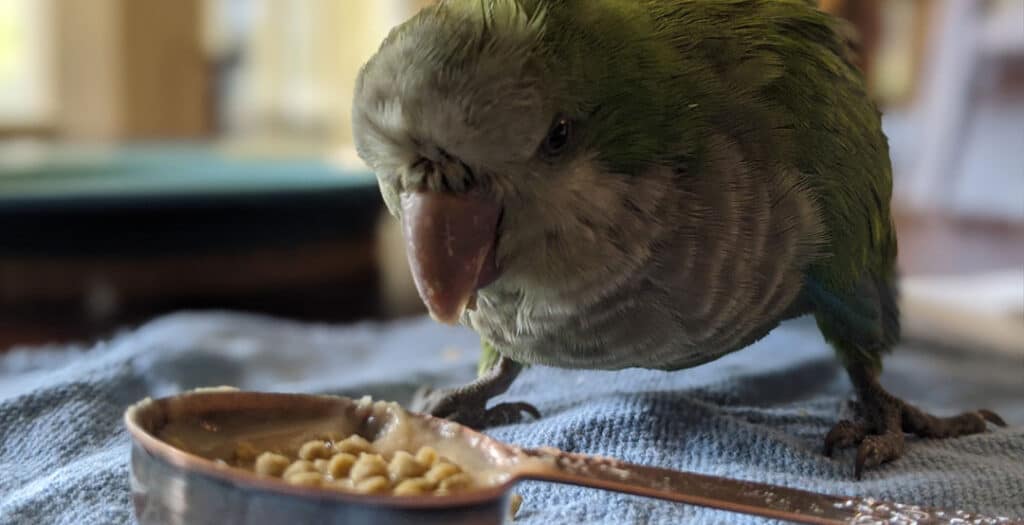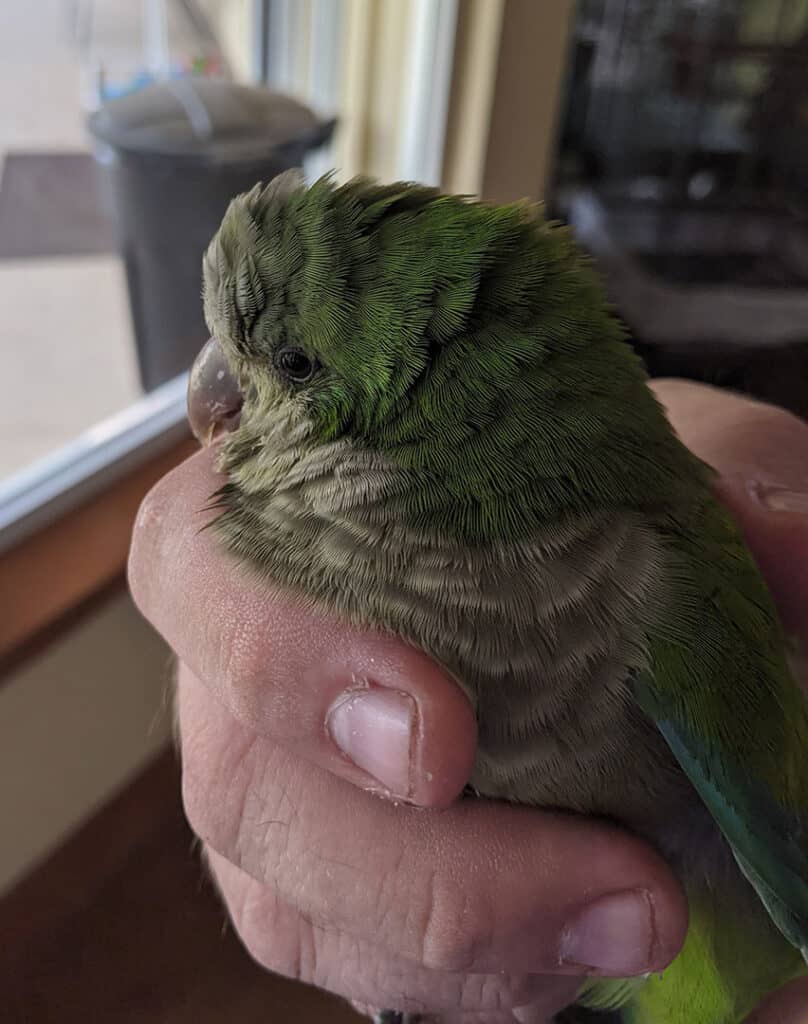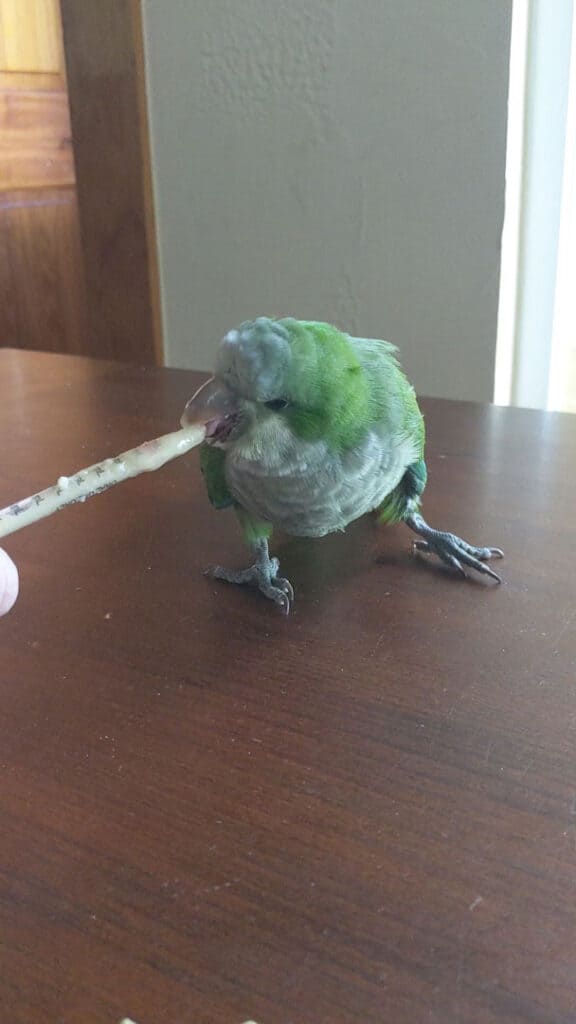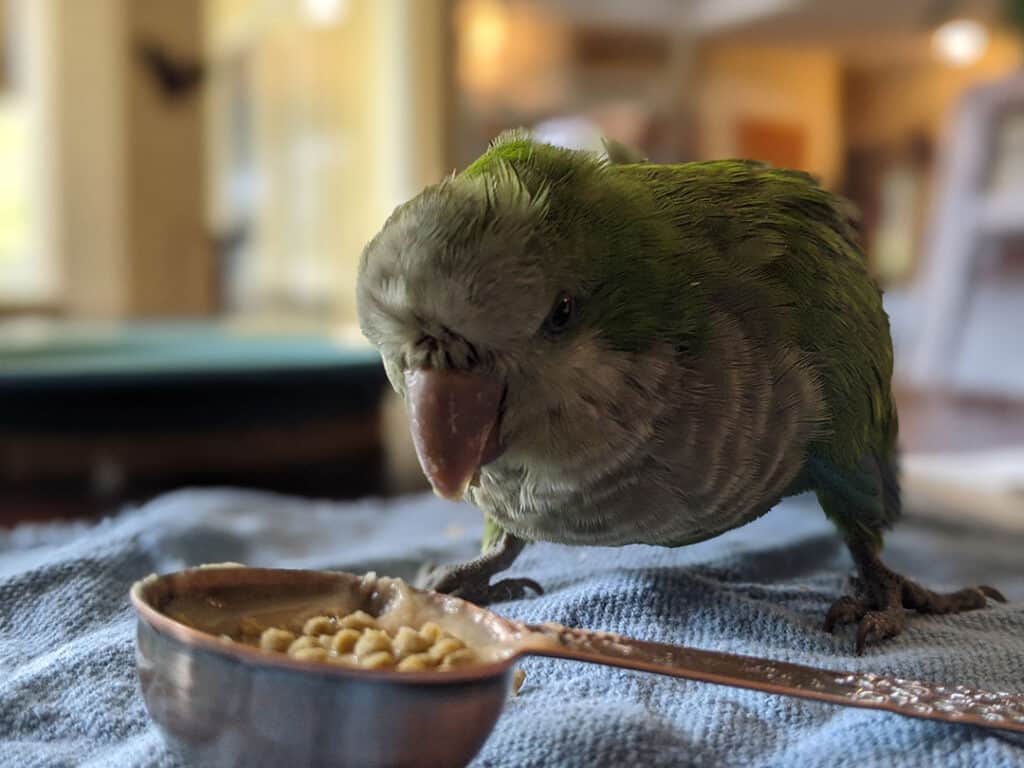
You might hear me mention from time to time one of our local wildlife rehabilitation groups that I work with, All Things Wild. All Things Wild is a non-profit organization that takes in wildlife of all kinds that are native to the Austin/Georgetown Texas area that have been injured or displaced. They are a small group, but are rapidly growing as the area is expanding and becoming more populated. I actually started working with them as a way to get a deeper understanding of nonprofits since there are not really any parrot-related nonprofits in the near area outside of a few kind folks that care and rehome birds from their own homes. Long-term, we hope to grow our own rescue and sanctuary for parrots in the Austin area.
While All Things Wild does help numerous birds, the majority are wild birds and raptors, such as owls, hawks, or songbirds that were hit by cars or otherwise injured. So it was surprising that a small green parrot ended up at the facility, unable to stand and very malnourished. Being the parrot guy, I took him with me to try and get him back on his feet.
Why would someone bring a parrot to a wildlife rescue?
Well there could be a couple of reasons:
The first is that when it comes to injured exotic pets that people come across, they just don’t know where to go. With a dog or cat it’s pretty easy to call a number, but what about a tortoise or a bird? Vet care is expensive, especially for these exotic species, and most folks want to help without costing an arm and a leg.

The second is actually something unique to Austin, but similar situations have happened all over the world with other species. Austin has a native group of quaker parrots, also called monk parakeets, that have lived in an area downtown since the 70’s when they were released (or possibly escaped), and they have been able to withstand the sometimes hostile Texas weather. So when he was found, the rescuers weren’t sure whether he was wild or tame.
This guy was not a wild bird though, his nails were well clipped which would not be expected from a bird living in the wild. He also seemed fairly tame to handle, although many animals (and humans) tend to not give much of a fight when they aren’t feeling well.

A little care & a lot of fight!
Well this little guy was definitely not doing so hot. It appeared he contracted some sort of respiratory infection, an injury to one of his wings, and he was just so weak that he was barely able to move. To start getting him nourished we ended up syringe feeding him for a couple weeks so he could gain his strength and deal with the antibiotics. It was slow going, and we weren’t sure he was going to make it, but the little guy definitely had a fighting personality.
One of the important things when working with new birds is to make sure to keep them quarantined from the rest of your flock. This is true for any birds, not just the injured or sick ones. You always want to be on the safe side to keep any possible illness from spreading to your feathered family.
After a couple of weeks he moved up to soft food mixed with some small high-potency pellets to really give him some energy, which he gobbled down (although he enjoyed the soft food so much it was hard to wean him to a normal diet!) At about 3 weeks in he finally started to show some real progress, not flying but climbing around his cage and making some funny grunts and other noises to get my attention.
Around this time we gave him the name Shamrock, he was our lucky little quaker that was not going to give up.
At around 5 weeks, he started showing signs of wanting to fly, so we let him go into supervised areas of the house to try and get off the ground to get some much needed exercise. After 6 weeks, we actually let him spend some time in various outdoor enclosures with soft ground to try and push his strength and it was time to start finding him a home.
Finding a Forever Home
Shamrock, ended up being adopted by a nice woman who was retired and had lost a long-time companion bird a few years earlier. She fell in love with Shamrock and had plenty of time to shower him with attention.

That’s one of the reasons I love helping these wonderful birds, there is nothing like the feeling of healing an injured or neglected parrot and then connecting them with someone that can really become a companion.
Shamrock wasn’t our first rescued bird, and for sure won’t be the last, but he was definitely a great success story!
Do you have any rescue success stories? Are the parrots still with you?